Cassava Culture, Don't Eat That Cassava!
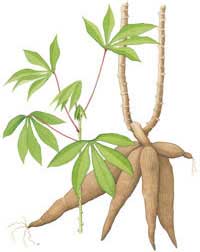 The cassava plant is now the world's third-largest source of low-cost carbohydrates, especially for populations in the humid tropics, with Africa being its largest center of production. It originated in Brazil and is now being brought to the world, particularly to the African continent, Southeast Asia, and many parts of the US. It is the principal source of nutrition for about 600 million people, or even more, around the world. Cassava roots are very rich in starch and contain significant amounts of protein, minerals, and vitamins A, B, and C.
The cassava plant is now the world's third-largest source of low-cost carbohydrates, especially for populations in the humid tropics, with Africa being its largest center of production. It originated in Brazil and is now being brought to the world, particularly to the African continent, Southeast Asia, and many parts of the US. It is the principal source of nutrition for about 600 million people, or even more, around the world. Cassava roots are very rich in starch and contain significant amounts of protein, minerals, and vitamins A, B, and C.
Yes, we understand that cassava is an important edible plant, but you should know that it could be poisonous if not prepared correctly. This is the reason why the Japanese Ministry of Health prohibits the use of cassava for human consumption.
The toxin in cassava is called "linamarin". It is chemically similar to sugar but with a CN ion attached. When eaten raw, the human digestive system will convert this to cyanide poison. Just a few pieces of cassava roots contain a fatal dose of poison.
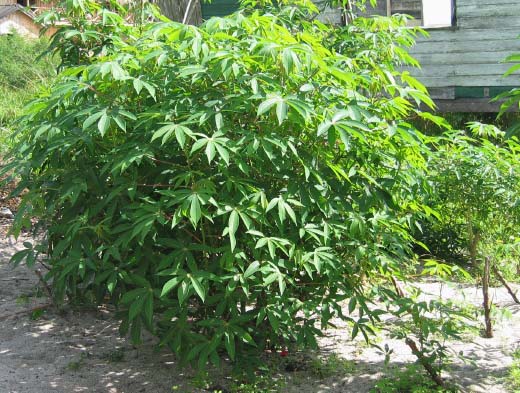
We often see reports not only on TV news programs but also in local tabloid papers, where school students died after eating cassava cake for their snacks. Many of those who prepared cassava cakes rushed to the nearby hospitals when they ate them. The cause of death was "cyanide poisoning".
Cassava is traditionally boiled or processed as an ingredient for native cakes in many tropical countries. Cassava is a staple food for many poor families. A popular delicacy among schoolchildren is deep-fried cassava coated with sugar.
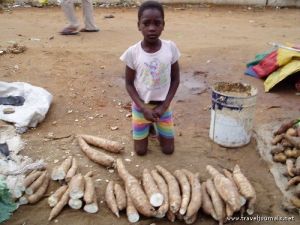 One hundred years ago, a group of Japanese immigrants went to Brazil for coffee planting and in search of green pastures. That was a time when Japan was very poor and suffered from food shortages. However, when they arrived in Brazil, to their surprise, there was no support of food and farmland as promised by the Brazilian government. The Japanese immigrants planted cassava just to survive on the poor, unfertile land. Cassava can grow easily on non-fertile lands. Many died due to the harsh life and cassava poisoning, and only a few immigrants survived with cassava as their main source of food. In our historical records of Japanese immigrants to Brazil, only three Japanese survived until the end of WWII.
One hundred years ago, a group of Japanese immigrants went to Brazil for coffee planting and in search of green pastures. That was a time when Japan was very poor and suffered from food shortages. However, when they arrived in Brazil, to their surprise, there was no support of food and farmland as promised by the Brazilian government. The Japanese immigrants planted cassava just to survive on the poor, unfertile land. Cassava can grow easily on non-fertile lands. Many died due to the harsh life and cassava poisoning, and only a few immigrants survived with cassava as their main source of food. In our historical records of Japanese immigrants to Brazil, only three Japanese survived until the end of WWII.
It is known that the bitter kinds of cassava are more poisonous than the sweet varieties. I believe the bitterness of cassava is caused by under-dried and infertile, gravel-conditioned land.
Yes, it is an easy plant to grow in all land conditions as long as the climate does not go below 15 degrees Celsius, and it gives a good yield. It can be harvested after about one year to 18 months, depending on the fertile land conditions and climate. Water and fertilizer are important to have sweet cassava or a less toxic crop. The young and fresh leaves may be cooked as a vegetable with coconut milk. The tubers contain large amounts of starch, which is processed into flour.
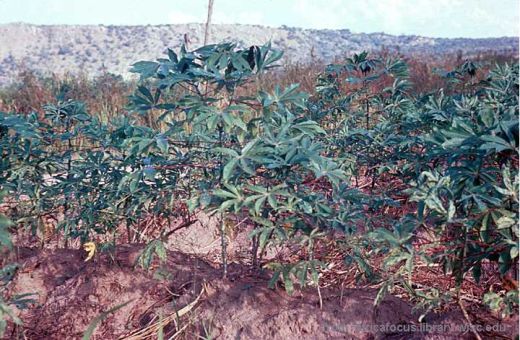
Cassava roots that are still attached to the stalk remain good for many months if stored underground. Once harvested, however, deterioration begins quickly. When the cassava root is converted from starch to sugar, a number of enzymatic reactions take place, which causes discoloration of the product and reduces its nutritional value. Bacterial and fungal deterioration also occurs.
According to scientific studies, the bitter variety of cassava contains large amounts of the cyanogenic glycosides "linamarin" and "lotaustralin". Toxic elements are concentrated on its surface or peel. The toxic substances may affect the liver, kidneys, and some parts of the brain when the poisons accumulate in the body. We suspect that the toxic substances in cassava may involve destroying the pituitary gland, which causes liver and kidney damage. To avoid exposure to the toxin, sweet cassava should be prepared before eating. Peel and slice the cassava, and then cook it thoroughly, either by baking, boiling, or roasting. Grating the root and prolonged soaking of the gratings in water will leach out the cyanide, reducing the levels of toxin. The best way for human consumption is to extract starch using the condensation method.
Probably, cassava roots are best applied for animal feeds and industrial uses rather than for human consumption.
However, I myself have planted hundreds of cassava plants as fence plants surrounding my two acres of mountainside land in the Philippines. Every day, the farm caretakers harvest a couple of cassava tubers for their snacks. How do I instruct them to eat it? They grate it and add water, then squeeze out the water to obtain white milk. They wait for the starch to settle, and then mix it with powdered milk, eggs, rice powder or flour, and sugar or honey. They can then bake or cook it as "hotcake" or "bread". If they prefer noodles, they add salt instead of sugar or honey.
In this way, the detoxification of cassava is at least adequate according to laboratory tests. But we are not yet sure because we might discover a new strain of toxic component in cassava in the future. I feel that cassava poisoning may cause some brain damage related to the pituitary gland, which in turn causes damage to various organs. It's no wonder the Japanese Ministry of Health prohibits the use of cassava as food.
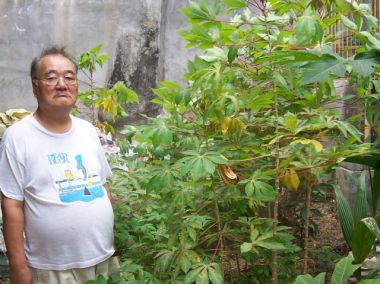
Photo shows cassava plants with the author, Mr. Takano
Reprint Rights: You may reprint this article within your website, blog, or newsletter as long as the entire article remains the same as well as the “About the Author” box.



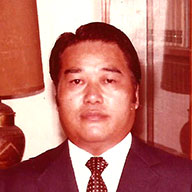 Junji Takano is a Japanese health researcher involved in investigating the cause of many dreadful diseases. In 1968, he invented PYRO-ENERGEN, the first and only electrostatic therapy machine that effectively eradicates viral diseases, cancer, and diseases of unknown cause.
Junji Takano is a Japanese health researcher involved in investigating the cause of many dreadful diseases. In 1968, he invented PYRO-ENERGEN, the first and only electrostatic therapy machine that effectively eradicates viral diseases, cancer, and diseases of unknown cause.


